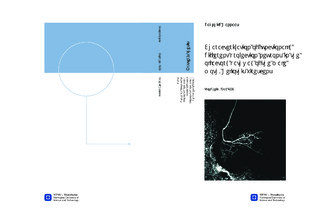| dc.description.abstract | Most organisms, ranging from mammals to bacteria, are dependent of their sense of smell in order to survive and reproduce. In moths, the detection of odorants is performed by olfactory sensory neurons located on the antenna. The sensory neurons bring olfactory information directly to the primary olfactory center in the brain, the antennal lobe. Onwards, projection neurons following one of three main tracts bring the information to higher olfactory centers including the mushroom body calyces and the lateral horn. In addition, neurons confined to the antennal lobe, local interneurons, influence the processing within the antennal lobe. This arrangement enables the animal to detect and identify the olfactory input, and to behave appropriately according to the odor. In addition to the detection of ordinary odorants, male moths have the ability to detect pheromones and interspecific substances released by conspecific and heterospesifics females, respectively. In the antennal lobe, the characteristic synaptic structures, termed glomeruli, are anatomically separated in to two systems, one male-specific compartment called the makroglomerular complex, and one consisting of ordinary glomeruli. In order to increase the knowledge about odor processing in the moth brain, intracellular recordings and staining was conducted.In this thesis, two functionally different types of projection neurons were characterized, one male-specific type innervating the macroglomerular complex, and one plant odor type innervating ordinary glomeruli. Among the projection neurons innervating ordinary glomeruli, distinct morphological categories, associated with different antenna lobe tracts, were found. Among the scientifically interesting results of the present study, is the finding that antenna lobe output neurons underlying different behaviors target seemingly non-overlapping regions of the lateral horn. | nb_NO |

